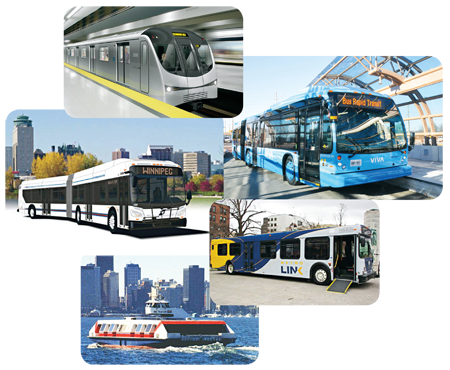With Canada Day just behind us, this is a great time to talk about the emerging enthusiasm across Canada for the importance of great transit. If you’ve ever travelled outside of Canada to the world’s largest cities, there’s no doubt you will have seen how some large urban areas have really incredible transit systems – established networks that mean you truly never need to drive anywhere, and where transit is the easiest, fastest way to get around.
But let’s talk about what makes good transit systems a priority, and how Canadian cities are increasingly investing in transit solutions. The first factor that comes into play in transit design, is population density. There’s no doubt that the more people who live or work in a defined area, the more transit can be effective. Because Canadian cities don’t yet have the population of the really big international cities, they traditionally haven’t built the extensive networks that exist in places such as London or New York City.
The problem is that this is a chicken and egg situation. Many people only want to live in an area where there’s convenient transit but transit planners – at least in the past – have often waited for an area’s population to increase before they invested in transit.
Fortunately, many Canadian cities are realizing that they need to invest in transit before the population increases happen. At the same time, they are increasingly encouraging the kinds of development that will support higher densities and that result in compact, pedestrian-friendly communities where people are more likely to leave their car at home and take transit.
Cities across Canada are building and expanding their transit networks, and using all sorts of different methods to encourage people to hop on board transit – from LRT and BRT, to ferries, subways and commuter trains, and even bike rentals.
In Montreal, the transit provider STM has launched a new partnership called the Transportation Cocktail, which recognizes that there are all sorts of ways for people to get around apart from private autos. The Cocktail offers great deals combining tickets for transit and Bixi, the bike rental program.
Calgary’s C-Train is an enormous success, with the LRT in 2009 having counted one billion passengers since service was launched in 1981. It has the highest ridership of any LRT in North America. One of the success factors – apart from Calgary’s quickly growing population – is that rides in the downtown area are free! Another great fact about the C-Train is that it gets all its electricity from wind power. Now that’s a really small carbon footprint.
In Vancouver, the SkyTrain, which is a system of fully automated trains running mostly on elevated tracks, connects to a wonderfully diverse transit system that gives people lots of choices. The entire system includes buses, trolley buses, a commuter rail system and the Sea Bus, a passenger-only ferry.
The SkyTrain has been credited with helping to spur a significant amount of transit-oriented development to Vancouver – BC Transit says that more than $5 billion of private money has been invested within a 10–15 minute walking distance of the SkyTrain and SeaBus.
Both Ottawa and Edmonton are currently extending their LRT lines, with the project in Ottawa involving tunneling through the busy downtown.
And what about the technology choice we’re using with Viva – BRT?
Although it’s relatively new to Canada, cities all across the country are discovering the benefits of choosing BRT. Some form of BRT has already been added to the transit services in many Canadian cities, with more extensive BRT services being planned or built across the country, from Victoria to Quebec City.
So in the future you’ll be able to visit cities across the country without having to get in a car, enjoying the sights by using our increasingly comprehensive transit services.
If you’re interested in reading more about BRT in Canada, be sure to read this article from the Canadian Urban Transit Association.

